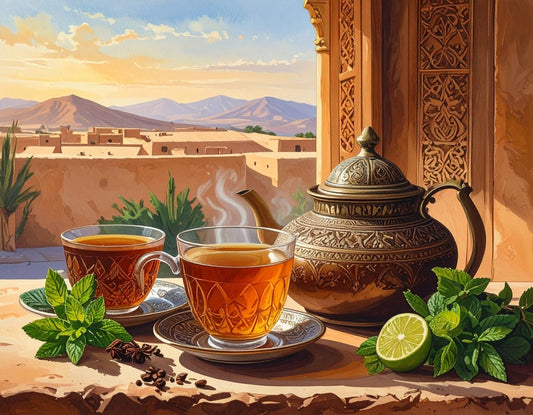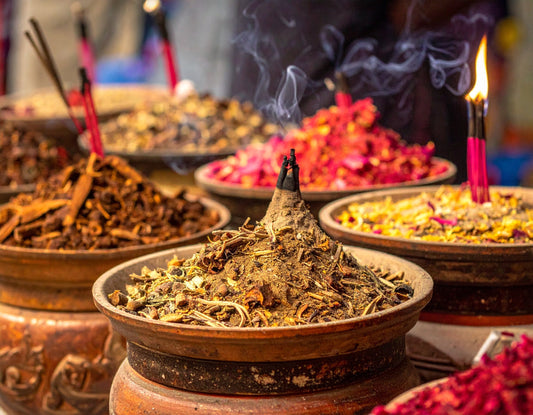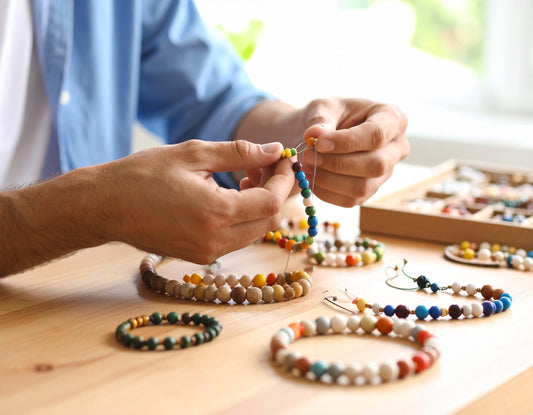
An immersive dive into the art of India: An exploration of its history, artistic traditions and cultural influences through the centuries.
Share
Immerse yourself in the captivating world of Indian art and be swept away by its rich history, fascinating artistic traditions, and cultural influences across the centuries. From elaborate temple paintings and detailed sculptures to ritual dances and colorful textiles, the art of India is a living testament to its age-old culture.
Creative, spiritual, and expressive, Indian art reflects the very soul of the country. Discover the different eras that have shaped this artistic heritage, from the refinement of Mughal miniature paintings to the abundance of colors and patterns of Buddhist frescoes.
Explore the distinct art movements of North and South India, such as the Tanjore school of painting or the Kangra school, which gave rise to unique and recognizable styles.
Also delve into the influence of Hindu religion and mythology on Indian art. From deities to epic poems, every aspect of Indian culture is beautifully depicted in its artwork.
Prepare to be amazed by the art of India, a captivating blend of tradition, history and undeniable beauty.
The History of Art in Ancient India
Art in ancient India dates back thousands of years and offers a fascinating insight into the country's cultural richness. The earliest evidence of art in India dates back to the Indus Valley Civilization era, where sculptures, seals, and jewelry have been discovered. However, it was with the emergence of the Maurya and Gupta empires that Indian art truly began to flourish.
Ancient Indian art is characterized by careful attention to detail and expression. Stone sculptures in temples, such as those in the Ajanta and Ellora caves, are outstanding examples of the art of this period. Murals, which depict scenes from daily life, gods, and goddesses, are also widespread.

Indian art is characterized by attention to detail and expression
The sculptures of the Gupta period are considered the pinnacle of ancient Indian art. They are characterized by great finesse and exceptional technical mastery. The statues of Buddha, Vishnu, and Shiva are particularly renowned for their serene expressions and timeless beauty.
Buddhist Art in India
Buddhist art in India played an important role in the spread of Buddhism in the region. It is characterized by images of Buddha, stupas (Buddhist funerary monuments), and murals depicting scenes from the life of Buddha.
Buddhist sculptures from India are renowned for their realism and delicacy. Bodhisattvas, enlightened beings who chose to remain on earth to help others achieve enlightenment, are often depicted in Indian Buddhist art. The murals of the Ajanta Caves, in particular, offer a captivating glimpse into the life of Buddha and his teachings.

The Art of Medieval India
The medieval period in India was marked by the emergence of several dynasties and empires, each of which made its own unique contribution to Indian art. The art of this period is characterized by a fusion of indigenous and foreign styles, resulting in distinctive and innovative art forms.
Architecture played a major role during this period, with iconic examples such as the temples of Khajuraho and the mosques of the Delhi Sultanate Empire. Sculptures and murals are also widespread, with religious and mythological themes predominating.
The medieval period in India also saw the emergence of miniature art, which was often used to illustrate religious manuscripts and epic poems. Mughal miniatures are particularly famous for their finesse and exquisite detail.
Mughal Art in India
Mughal art in India reached its peak during the Mughal Empire, which ruled much of the Indian subcontinent from the 16th to the 19th centuries. Mughal art is characterized by a fusion of Persian, Turkish, and Indian styles, creating a unique and recognizable style.
Mughal architecture, represented by monuments such as the Taj Mahal and the Red Fort in Delhi, is considered one of the pinnacles of Mughal art. These magnificent structures are known for their perfect symmetry, elaborate details, and use of precious materials such as marble and red sandstone.
Mughal miniatures are also very famous and often depict scenes from the royal court, epic battles, and portraits of important figures. These miniatures are characterized by a vivid color palette, meticulous detail, and great technical mastery.

The Red Fort at Dheli
Contemporary art in India
Contemporary art in India reflects the country's cultural diversity and social evolution. Since India's independence in 1947, many Indian artists have explored new forms of artistic expression and pushed the boundaries of tradition.
Contemporary Indian art encompasses a wide variety of media, such as painting, sculpture, photography, installation, and performance. Contemporary Indian artists address themes such as identity, politics, globalization, and the environment, reflecting the concerns of modern Indian society.
India is also home to numerous contemporary art festivals, exhibitions, and galleries that showcase the talent of Indian artists. These events provide a platform for emerging and established artists to showcase their work and engage with the public.
Regional artistic traditions of India
India is a diverse country with a wide variety of regional artistic traditions. Each region of India has its own distinctive styles and artistic techniques, which are often influenced by geography, climate, religious beliefs, and local customs.
In northern India, for example, the Pahari style of miniature painting is very popular. These paintings often depict mythological and romantic scenes, with a soft color palette and delicate details. In southern India, the Tanjore style of painting is famous for its vibrant colors, gold ornamentation, and depictions of Hindu deities.
Indian textiles are also an important aspect of regional art in India. Each region of India is known for its distinctive textiles, such as the silk saris of Kanchipuram in southern India, the cashmere fabrics of Himachal Pradesh in northern India, and the colorful embroideries of Gujarat in western India.
The influence of Indian art on other cultures
Indian art has had a significant influence on other cultures around the world. Ancient Indian sculptures and frescoes influenced the art of Southeast Asia, particularly in countries like Cambodia and Indonesia. The temples of Angkor in Cambodia, for example, bear a strong influence of Indian art.
Indian art also had an impact on Western art. Beginning in the 19th century, many European artists were inspired by Indian art and incorporated Indian elements into their own work. Art movements such as Art Nouveau and Art Deco were influenced by the patterns and colors of Indian art.

The influence of Indian art on Art Deco
Famous Indian Artists
India has produced many talented artists who have left their mark on the art world. Among the most famous Indian artists are Raja Ravi Varma, considered one of the pioneers of modern art in India; Amrita Sher-Gil, known for her expressive portraits; and Tyeb Mehta, famous for his abstract paintings.
Other notable Indian artists include MF Husain, FN Souza, Jamini Roy, Subodh Gupta, and Bharti Kher. Each of these artists has made a unique contribution to Indian art and helped shape the artistic landscape of India.
Conclusion: The art of India, a reflection of its cultural richness.
Indian art is a living testament to the country's rich culture and history. From ancient sculptures to contemporary paintings, Indian art is a fusion of ancient traditions and new experiments. It reflects the beliefs, values, and concerns of Indian society throughout the centuries.
Indian art is also a bridge between past and present, between tradition and modernity. It continues to evolve and influence other cultures around the world, while remaining rooted in India's deep roots.
Whether through majestic temples, detailed sculptures, vibrant paintings, or colorful textiles, the art of India is an invitation to explore the richness and cultural diversity of this fascinating country. Prepare to be amazed by the art of India, a captivating blend of tradition, history, and undeniable beauty.
To go further...
Our O'Shiny Art & Lifestyle collection:
O'Shiny Art & Lifestyle mugs bring a modern touch to the serene and tranquil atmosphere in your daily life.
Enjoying your favorite beverage with these O'Shiny Art & Lifestyle mugs will immerse you in a relaxing and meditative mood. Each mug, designed with an elegant aesthetic, encourages you to take a moment to refocus and find your inner serenity, no matter where you are.
"Perle d'Azur" Collection 300ml hand-painted mug by O'Shiny Art & Lifestyle
Stay connected to explore more of O'Shiny Art & Lifestyle's artistic universe. Thank you for your interest.
Photos by IA: © O'Shiny Art & Lifestyle "All rights reserved."




